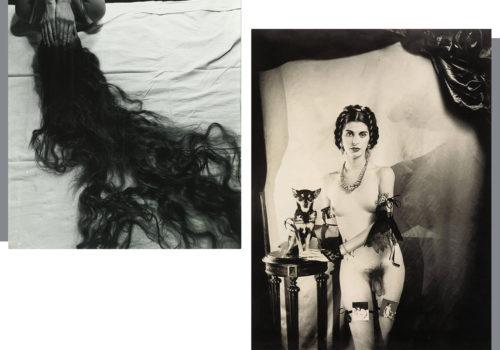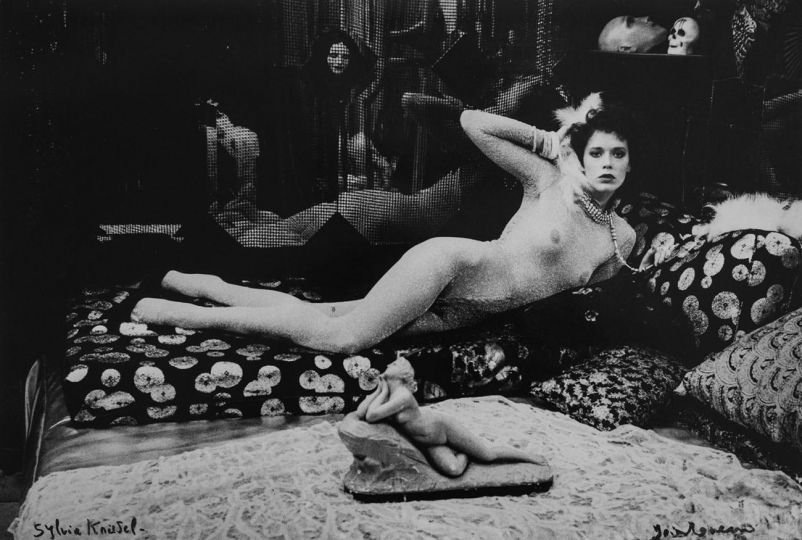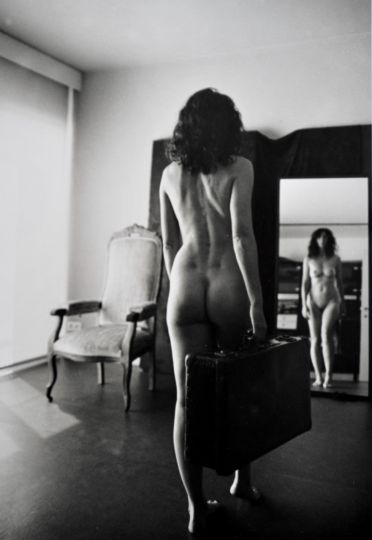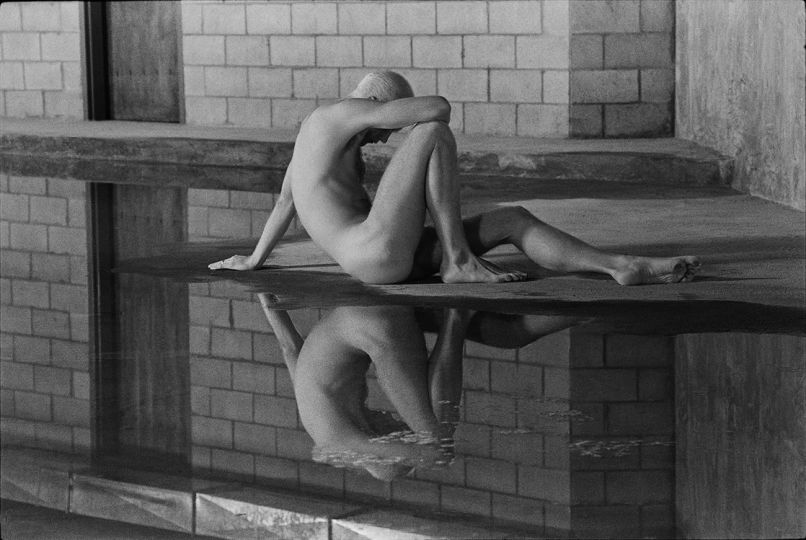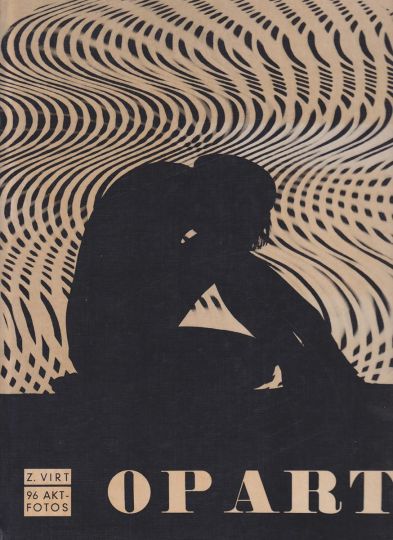I have the pleasure of starting 2024 by introducing you to the master who started my collection, Joel Peter Witkin. For years, one of his most extraordinary creatures has been in my living room, welcoming guests. And to each of them I reported the story that Witkin himself had told me about the origin of his masterpiece. He had landed in Albuquerque and asked the taxi driver if, by any chance, he knew any bizarre person willing to be photographed. « My girlfriend, » the taxi driver replied. And that love was Man with Dog.
Ettore Molinario
How good is Joel Peter Witkin in making fun of those who believe that the scandal is sex, and that it’s even supreme scandal if in one body the sex is double, a set of attributes such as the set of jewels, earrings and necklaces, which a very sweet hermaphrodite shows with polite naturalness. How good is Witkin, a baroque artist in search of wonders, a romantic artist in search of photogenic darkness, to cause a stir by showing what nature creates, even when bizarre, and what men would like to hide, and therefore would like to look at more closely. He’s capable, cultured and elegant Joel Peter Witkin, because his Man with dog boasts at least two very noble precedents, Naked man being a woman by Diane Arbus, 1968, and, going back in the history of art, the portrait of Eleonora from Toledo, painted by Bronzino in 1545. Framing the face of the beautiful wife of Cosimo I de’ Medici was a corolla of brown hair, held back by a circlet of gold and precious stones. A masterpiece of composure that nineteenth-century Victorian women, who inspired Man with dog, took as a model, rolling the braids on the sides of their heads or in a crown around the oval of their faces. Any trichological exuberance was allowed and coveted, in the sense of the richness of the hair and its light, as long as it was kept « under lock and key » in the most elaborate hairstyles. And the middle parting? It’s like the right path, morally necessary to keep good and evil in balance.
But what happens or rather what has always happened since the birth of the Greek theatre, when a woman decides to untie ribbons, combs, hairpins, and releases the beauty of her hair in infinite streams? What happens is what Paul Coze obsessively documented in the 1950s, messing up the hair of his wonderful girls. But above all, what happens is what Joel Peter Witkin, who studied poetry before photography, discovered by reading one of the most beautiful pages of Spleen, A hemisphere in a hair, where Charles Baudelaire pleads his woman to « breathe for a long time the smell of your hair », and to immerse his face in it « as a thirsty person does in spring water ». And in the « ember of your hair », red we imagine, the French poet breathed « the smell of tobacco mixed to opium and sugar ».
We don’t know with what fragrances, whether vanilla, coconut oil, ointment, the angel who posed in Witkin’s studio in 1990 had imbued the air. But we know what was it that little griffin-dog was guarding – from one of the images on his collar. And the treasure, as Joel Peter Witkin reminds us, is the power of desire, the creative and destructive power of love and death, which resides in the hair and, in a broader sense, in their moderate and dangerous composure. Didn’t the master of Albuquerque leave us a precious clue by tying the portrait of Salomé to one of the garters of his model? And who was Salomé if not the woman who lets her hair down and, dancing in a blinding vortex, conquers Herod, intoxicates him and dominates him until she obtains the most horrible gift, the head of the Baptist? How good is Joel Peter Witkin at deceiving us, how good is he at combing our fears by showing what is a simple and quiet physical attribute, and instead hiding in the most luxuriant braid, black as ebony and night, what desire is capable of doing when it’s set free.
Ettore Molinario
DISCOVER COLLECTION DIALOGUES
https://collezionemolinario.com/en/dialogues

